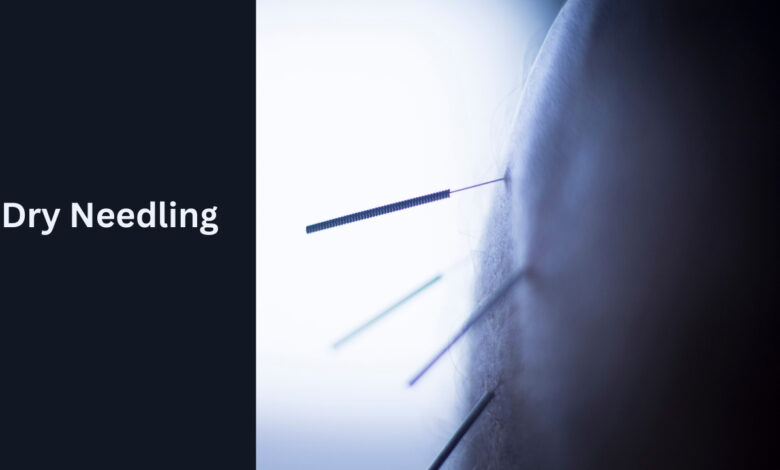Unraveling the Mystery Why is Dry Needling Illegal in Certain Areas?

Introduction to Dry Needling
Dry needling, a technique used by various healthcare professionals to treat muscle pain, has become increasingly popular in recent years. It involves inserting thin, monofilament needles into the skin to target myofascial trigger points, aiming to relieve pain and improve range of motion. Despite its growing acceptance and reported effectiveness, dry needling remains illegal or heavily regulated in certain areas. This article explores the reasons behind these legal restrictions, providing an in-depth understanding of the controversy surrounding this practice.
Understanding Dry Needling
Before delving into the legal aspects, it’s important to comprehend what dry needling entails. This technique, often compared to acupuncture, is distinct in its approach and theoretical basis. Dry needling focuses specifically on treating musculoskeletal issues and is rooted in modern Western medical principles, unlike acupuncture, which is based on traditional Chinese medicine. Understanding this distinction is crucial when discussing the reasons for its legality or illegality in various regions.
Legal Status of Dry Needling
The legality of dry needling varies widely, with some countries and states fully embracing it while others impose strict bans or regulations. These legal variances often stem from differing definitions and scopes of practice for healthcare professionals. In places where dry needling is illegal, it’s typically due to regulatory bodies deeming it outside the scope of practice for certain professionals, such as physical therapists.
must read: Top 10 Best Lion’s Mane Supplements of 2024 A Comprehensive Review and Guide
Scope of Practice Concerns
One of the primary reasons dry needling is illegal in some areas is the concern over the scope of practice. In many regions, laws governing healthcare professions are very specific about what each profession can and cannot do. For instance, some states in the U.S. consider dry needling to be a form of acupuncture, which is often restricted to licensed acupuncturists. Consequently, when practitioners such as physical therapists perform dry needling, it can be viewed as practicing acupuncture without a license, thus leading to its illegality.
Safety and Training Issues
Another significant concern is safety and the level of training required to perform dry needling. Critics argue that practitioners, especially those not trained in traditional acupuncture, may not have sufficient training to perform dry needling safely. This concern is heightened by the invasive nature of the technique, which, if done improperly, could lead to complications such as infections or punctured organs. The variability in training programs and the lack of standardized certification contribute to the apprehension, leading some regulatory bodies to prohibit the practice.
The Role of Professional Opposition
The illegal status of dry needling in some areas is also fueled by opposition from certain professional groups, notably acupuncturists. These groups often argue that dry needling infringes on their scope of practice and that practitioners other than licensed acupuncturists do not have adequate training to perform needle-based interventions. This professional turf war has led to legal battles and lobbying efforts, influencing the regulatory landscape surrounding dry needling.
Patient Safety and Ethical Considerations
At the heart of the debate is the concern for patient safety and ethical practice. Those in favor of strict regulations or bans argue that allowing insufficiently trained practitioners to perform dry needling poses a risk to patient safety. Ethical considerations also come into play, with questions about informed consent and the practitioner’s duty to provide safe and effective treatment. These concerns are paramount in discussions about the legality of dry needling and are often cited by lawmakers when imposing restrictions.
The Impact on Healthcare Practice
The legal restrictions on dry needling have significant implications for healthcare practice. For practitioners, it limits the tools available to treat patients effectively. For patients, especially those who benefit from dry needling, it restricts access to a potentially valuable treatment modality. The debate over dry needling’s legality also highlights larger issues in healthcare regulation, including how new techniques are integrated into existing frameworks and the role of interdisciplinary collaboration in patient care.
Conclusion Navigating the Legal Landscape
In conclusion, the question of why dry needling is illegal in certain areas is multifaceted, involving scope of practice issues, safety and training concerns, professional opposition, patient safety, and ethical considerations. As the healthcare field continues to evolve, so too will the discussions and legal standings around practices like dry needling. Understanding these factors is crucial for practitioners, patients, and policymakers as they navigate the complex legal landscape of modern healthcare treatments. The future of dry needling, and similar techniques, will likely depend on ongoing research, interdisciplinary dialogue, and evolving legal and ethical standards in the healthcare field.